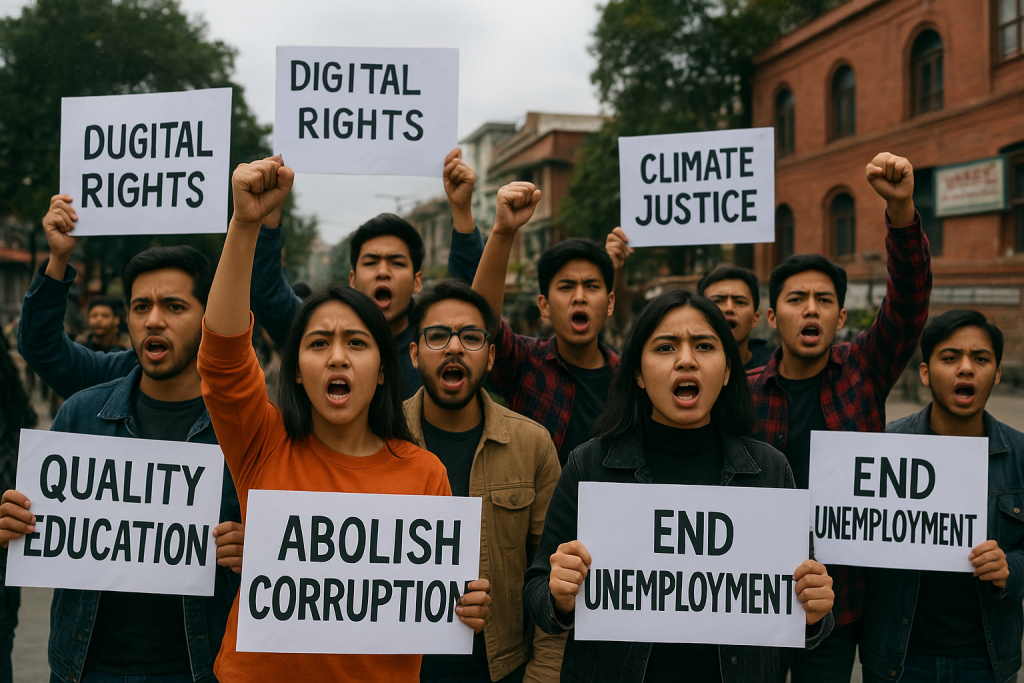In recent years, Nepal has witnessed a remarkable shift in its socio-political landscape. The driving force behind this change is Generation Z (Gen-Z)—young people born between the late 1990s and early 2010s—who are rising to the forefront of activism. With social media in their hands and frustration in their hearts, they are challenging the old political order and demanding accountability, transparency, and reforms.
Roots of the Protest
Gen-Z in Nepal has grown up in a time of political instability, frequent government changes, corruption scandals, and unfulfilled promises of development. Unlike the older generations, who lived through monarchy, civil war, and the constitution-making process, this generation has little patience for the slow and stagnant pace of governance.
For them, issues such as unemployment, quality education, climate change, digital rights, and corruption are not just political debates but personal struggles that shape their everyday lives. Many Gen-Z protesters are either students or fresh graduates facing limited opportunities and feeling alienated from traditional politics.
The Role of Social Media
Platforms like TikTok, Instagram, Facebook, and X (Twitter) have become central in mobilizing this movement. Hashtags, viral videos, and online campaigns are amplifying voices that previously went unheard. Unlike older political movements that relied on party machinery, Gen-Z’s protest is leaderless, decentralized, and largely spontaneous.
This digital activism has successfully turned online frustration into physical gatherings. Streets in Kathmandu and other cities have seen youth holding placards, chanting slogans, and organizing peaceful demonstrations.
A Break from Traditional Politics
One defining feature of the Gen-Z protest in Nepal is its independence from political parties. Many young activists openly reject party-affiliated student unions, accusing them of being extensions of corrupt leadership. Instead, Gen-Z leans toward issue-based activism—fighting for causes rather than loyalty to ideology.
This detachment is both a strength and a challenge. While it gives authenticity to their movement, it also raises questions about long-term sustainability and whether these protests can translate into lasting policy reforms.
Broader Implications
The rise of Gen-Z protest in Nepal signals a generational shift in civic engagement. It represents not only frustration with the status quo but also a demand for a new kind of politics—one that is inclusive, transparent, and responsive. The older leadership can no longer ignore this voice, as the youth make up a significant portion of Nepal’s population and voters.
If nurtured constructively, this movement could reshape Nepal’s democracy by pressuring leaders to deliver genuine reforms. If dismissed, it risks deepening the disconnect between citizens and the political class.
Conclusion
The Gen-Z protest in Nepal is more than just a wave of discontent—it is a civic awakening. It reflects the impatience of a generation that refuses to wait decades for change. Whether their activism evolves into organized political power or remains a force of resistance, one thing is clear: Gen-Z has arrived, and they are determined to be heard.

